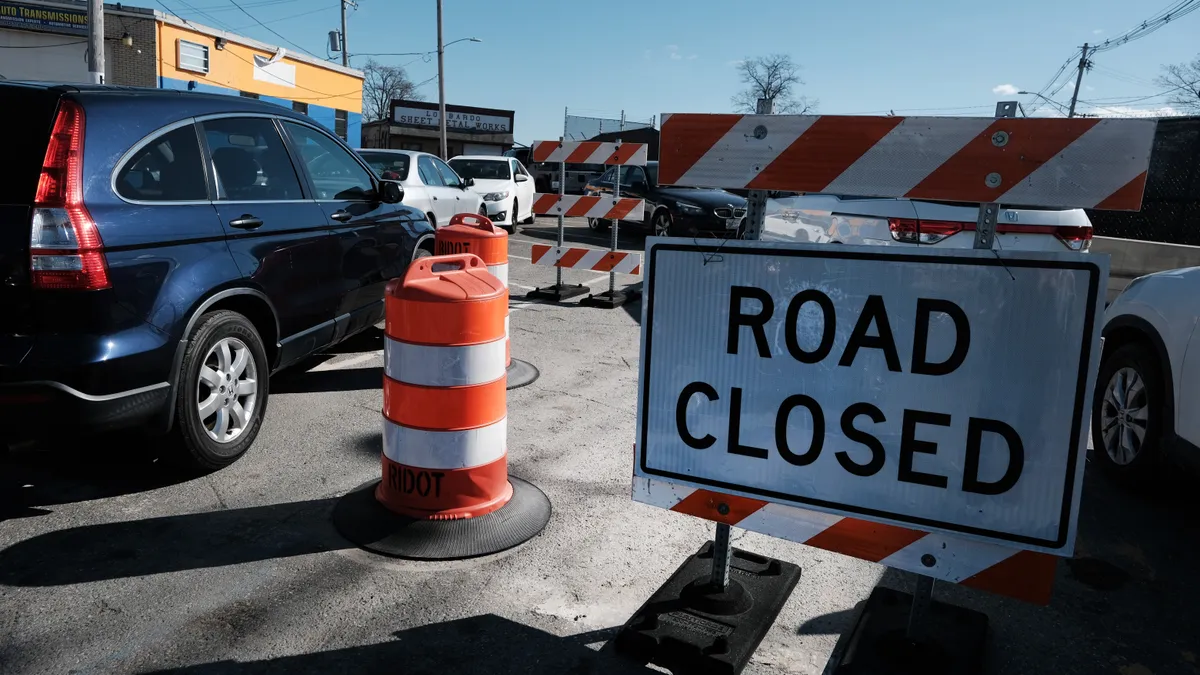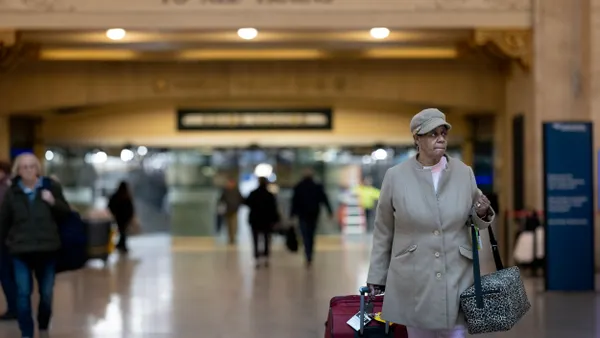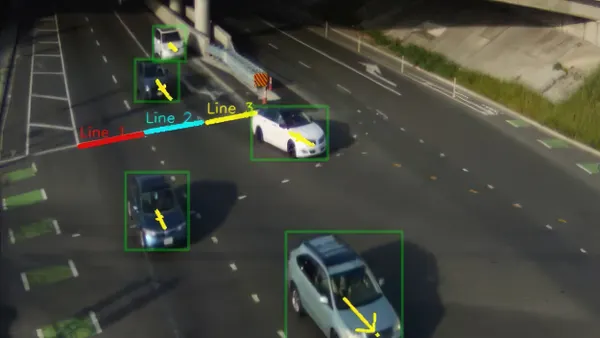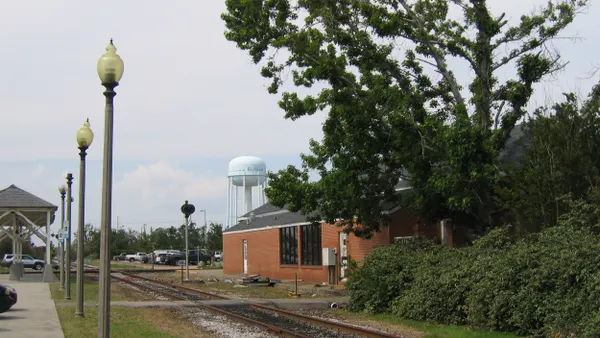Dive Brief:
- The National Transportation Safety Board (NTSB) is at loggerheads with the Federal Communications Commission (FCC) over the FCC's reduction in spectrum allocation for connected vehicle technology.
- Oral arguments were heard this week in the federal appeals court for the District of Columbia Circuit in connection with an appeal of the FCC's order filed by the Intelligent Transportation Society of America (ITS America) and the American Association of State Highway and Transportation Officials (AASHTO).
- ITS America and AASHTO argue that the full 75 MHz spectrum is essential to the deployment and development of connected vehicle applications, such as hazard and collision warnings, and the safety benefits they promise to bring to drivers, pedestrians and other road users.
Dive Insight:
According to a 2021 Congressional Research Service report, more than $2.2 billion in federal, state, local and private-sector investment has gone into testing and deployments of connected vehicle technologies in 27 states including Pennsylvania, Wyoming, Georgia, Florida, and New York. But those states' investment in that equipment, along with those of other connected vehicle pilot programs, could become stranded assets if the lost spectrum is not recovered or replaced, said NTSB board member Michael Graham.
In an interview, Graham explained that the NTSB has three issues with the FCC's actions. First, he said, reducing the available spectrum in the 5.9 GHz band from 75 MHz to 30 MHz doesn't allow enough bandwidth for all of the current and future applications that will connect vehicles to each other, as well as to traffic signals and street and road users. In addition, interference on the remaining 30 MHz threatens the reliability of critical safety messages, and the regulatory uncertainty around spectrum availability has all but halted progress in this field, according to Graham. With those impediments, Graham said, he does not see how the technology can advance.
Graham adds that because of the FCC’s actions to allow only C-V2X — cellular vehicle to everything — technology in the remaining 30 MHz of the safety band, the state and local transportation departments that have invested in dedicated short-range communications (DSRC) infrastructure assets "must either repurpose those assets to C-V2X or risk losing that investment."
ITS America has long advocated for connected vehicle technology, said Laura Chace, president and CEO of the advocacy group. She explained that even with advanced driving assistance systems such as lane-keeping assistance and automatic emergency braking, connected vehicles further enhance safety. "Our members are in agreement that the safest vehicle is a connected and automated vehicle," Chace said, adding that connected vehicles also improve pedestrian safety and can reduce traffic congestion.
Asked to comment, a spokesperson at the FCC referred to a document on the agency's website and said it has "nothing to add at this time."
Chace acknowledged that there is a "legitimate discussion" about the best use of the 5.9 GHz spectrum, but she noted that this spectrum was dedicated to vehicle safety technologies in 1999 and that other spectrum is available to meet the FCC's needs for more Wi-Fi bandwidth.
Deadly crash shows need for connected vehicle tech, advocates say
On a wintry day in January 2020, along a 55 mph curve on Interstate 70 near Mount Pleasant, Pennsylvania, a motorcoach with 61 passengers veered across the highway, struck an embankment and rolled over, blocking all travel lanes. A tractor-trailer rammed into the bus and was itself struck by another tractor-trailer. A third truck and a passenger car were also caught up in the crash, which killed five people and injured 59 bus passengers.
The accident is being investigated by the NTSB. Graham said the board will discuss how connected vehicle technologies could have prevented or minimized the severity of that accident.
In Wyoming, a pilot program is testing that very question. Along Interstate 80, the Wyoming Department of Transportation deployed 75 roadside units to receive and broadcast messages and outfitted 400 state vehicles to monitor and alert drivers to adverse weather conditions, work zones and other potential hazards. Travel information is made available to the public on the Wyoming 511 app and to commercial drivers on a dedicated portal.
Chace expects a decision by the D.C. Circuit Court in late spring or early summer. If the full spectrum is not restored, she warns, "It will have a negative impact on safety."
Clarification: We have updated this article to clarify that the National Transportation Safety Board is not a party to the case in the District of Columbia Circuit Court. Michael Graham has also expanded on his comments in the second paragraph of the Dive Insight and clarified that he is speaking for himself and not for the NTSB.











